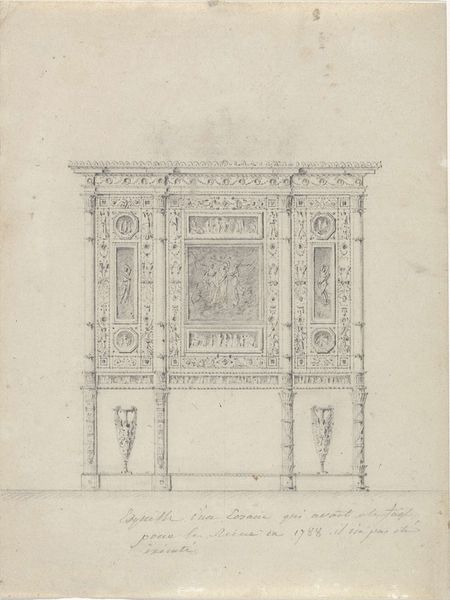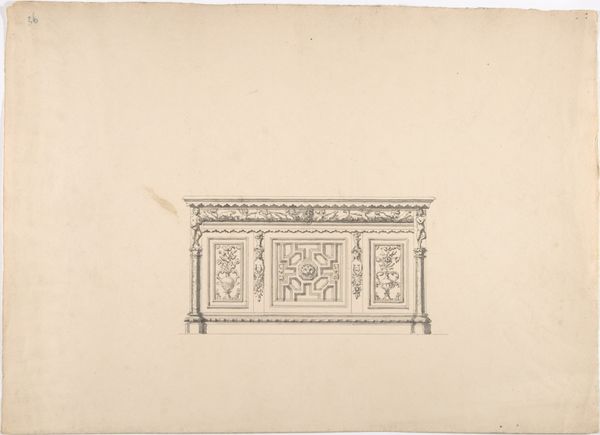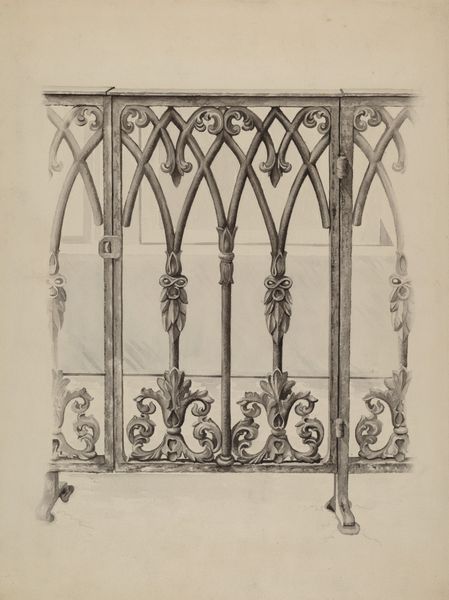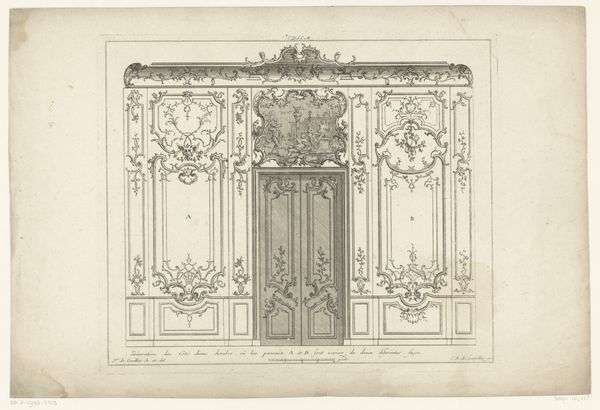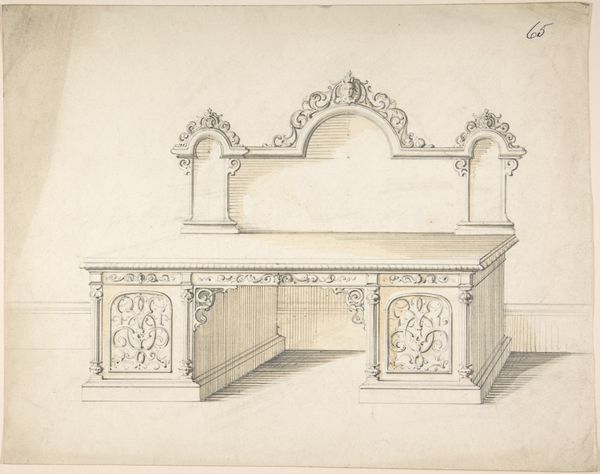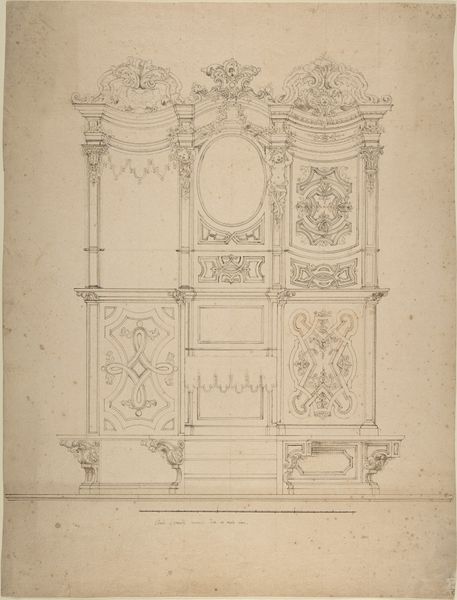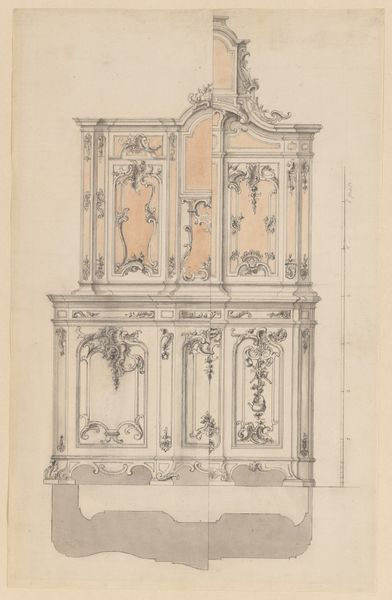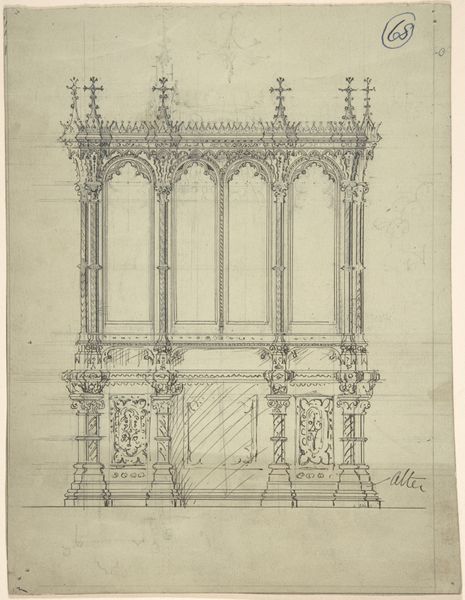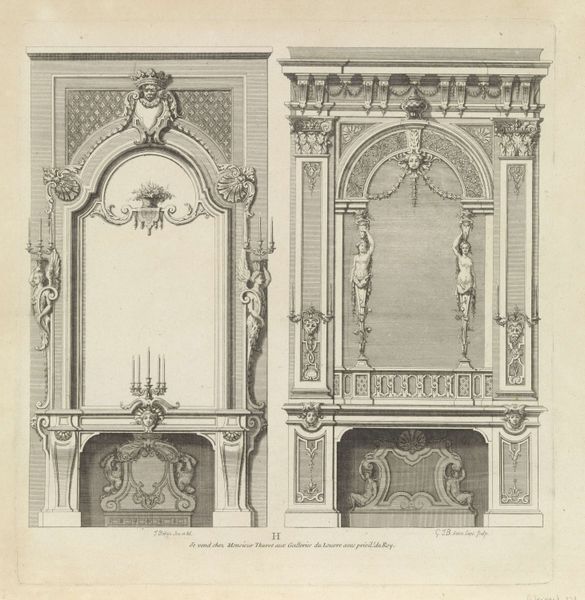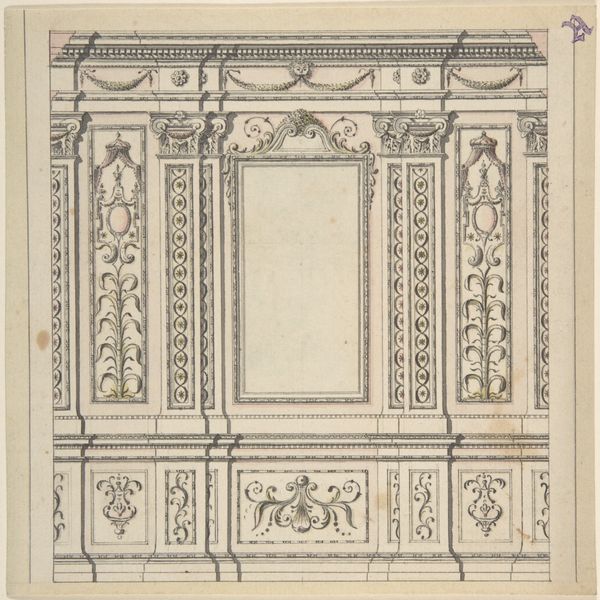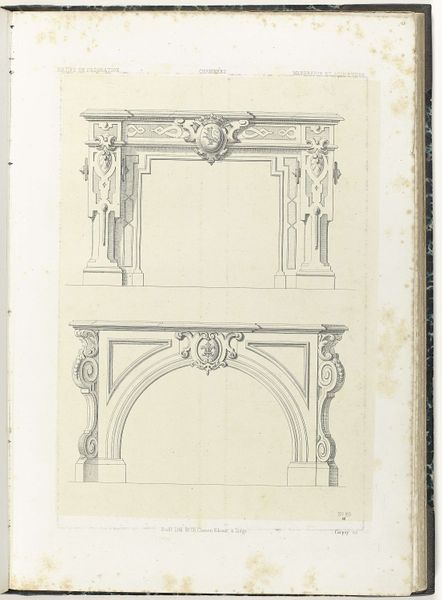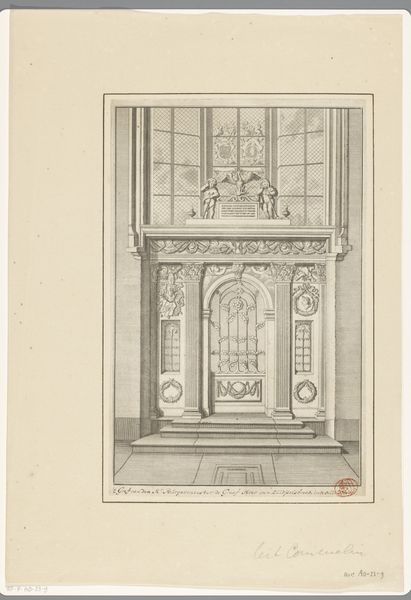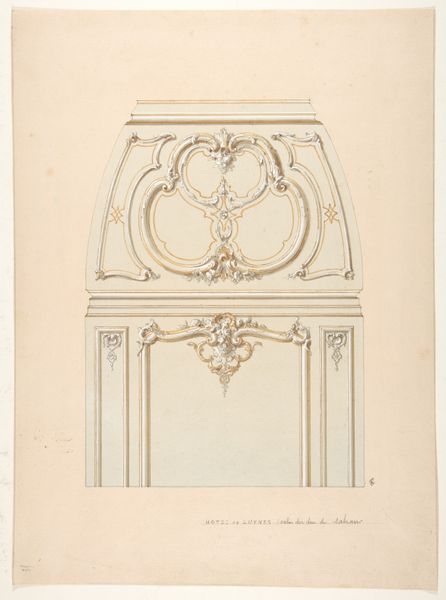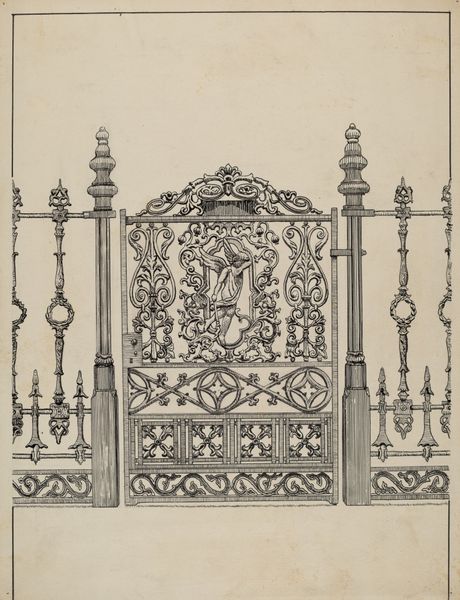
drawing, wood
#
drawing
#
form
#
geometric
#
line
#
wood
Dimensions: overall: 20.5 x 26.9 cm (8 1/16 x 10 9/16 in.) Original IAD Object: 55 1/2"high; 55"long; 23"wide
Copyright: National Gallery of Art: CC0 1.0
Curator: I'm struck by its almost oppressive symmetry. It feels very still and formal. Editor: Indeed. What we're looking at is a drawing of a “Press Cupboard” made circa 1936 by Francis Borelli. We think the piece would have been carved from wood and is a design study of sorts, primarily made using simple lines. Curator: Borelli’s precision creates a fascinating tension. The repeating floral motifs and geometric patterns, particularly the diamonds, aren’t just decoration. The flower motif repeats the life-death cycle and speaks of the cycles of home life. Editor: The “press cupboard” itself is very revealing as well. These storage pieces served a particular function for specific individuals: housing and organizing things and objects that reflected someone’s identity, status, or personal life, though those with lower socioeconomic status often slept in this very space. The furniture became intertwined with personhood and how social relations play out materially in one's private sphere. Curator: Looking at the composition, the symmetry makes me think of the human body, organized with intention. We use this design with repeating patterns, it makes sense that domestic items, like a "press cupboard," bear the marks of the personal life in all senses. Editor: Yes! The very term "cupboard" has roots in hierarchical symbolism, it once literally implied something one prized that they wanted to 'keep near' them and protect from external damage or even robbery, further reinforcing the notion of possessions becoming extensions of selfhood and power dynamics. Curator: Power… the geometric forms lend themselves to many traditions. We should consider how something functional like this can be more than meets the eye when repeated as symbol, when used to make functional everyday spaces that reflect culture through imagery. The act of drawing, is also the act of remembering, of reproducing history itself. Editor: A striking insight. This "Press Cupboard," ostensibly utilitarian, reveals through line and form deeper narratives of personhood, social structures, and material relationships that we project to the domestic spaces we inhabit. Thank you for these thoughts. Curator: Thank you. Seeing those elements highlighted in our reflections enriches how we understand images that surround us daily.
Comments
No comments
Be the first to comment and join the conversation on the ultimate creative platform.
